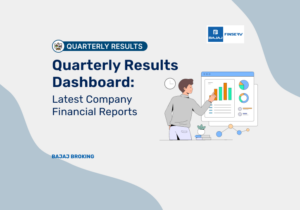Q3 – Quarterly Results: Latest Company Financial Reports
Last Updated on January 30, 2024 by BFSLTeam BFSLTeam

Check Quarterly Results of Companies: Earnings, Revenue Growth, and Other Detailed Info.
Financial reports are the lifeline of informed investing for shareholders and stakeholders alike. Understanding how to dissect and interpret these reports is a vital skill for any investor, particularly for those in the Indian retail market. In this comprehensive guide, we will step into the world of financial reports, focusing on quarterly results released by public-listed companies. We’ll go through not just what these reports are but also why businesses release them, what information they contain, important financial indicators, how to read them, why reading them is important, considerations, and important points to remember.
Table of Content [hide]
What Are Financial Reports?
Most publicly traded corporations provide quarterly results of their earnings. These quarterly results provide a thorough analysis of the business’s financial results for a particular quarter. They are essential for all stakeholders involved because they give information on the state of the business, its potential for development, and its overall financial robustness.
Additional Read: 6 Passive Income Ideas
Why Do Companies Release Them?
Financial reports serve multiple purposes for companies:
1. Transparency and Accountability:
- Transparency: By disclosing their financial results, companies adhere to the principles of transparency and openness. This fosters trust among shareholders and the public.
- Accountability: The release of financial reports ensures that companies are held accountable to their shareholders and regulatory authorities. This transparency discourages fraudulent activities and unethical financial practices.
2. Attracting Investors:
- Attracting New Investors: Positive financial reports can attract new investors. Strong financial performance often leads to increased investor confidence and interest, which is vital for a company’s growth and expansion.
- Retaining Existing Investors: Consistently sharing financial data helps companies retain their existing investor base, as it provides them with the necessary information to make informed decisions.
3. Regulatory Compliance:
- Legal Requirement: Publicly-listed companies are legally required to release financial reports at regular intervals to comply with regulatory authorities, such as the Securities and Exchange Board of India (SEBI).
What Do Financial Reports Contain?
Financial reports typically consist of three main sections:
1. Income Statement (Profit and Loss Statement):
- Revenue: Information about the company’s overall earnings for the quarter is provided in this section. The company’s quarterly sales and main revenue streams are captured under the revenue section.
- Expenses: Expenses include a list of all operational and non-operating outflows. These include operating expenditures (opex) incurred by the company, such as payroll, marketing charges, and loan interest; and capital expenses (capex) such as purchase of new machinery, setting up new units, etc.
- Net Profit (or Loss): Upon deducting total expenses from total revenue, you arrive at the net profit (or loss). A net profit denotes profitability, and makes it a lucrative prospect for investing, whereas a net loss denotes unprofitability.
2. Balance Sheet:
- Assets: All the company’s assets such as cash, accounts receivable, inventory, and real estate fall under the head of ‘assets’. This gives you a general overview of the company’s holdings.
- Liabilities: The sum of the company’s debts, including loans, bonds, and accounts payable, are referred to as its liabilities. Risk-averse investors, usually, tend to stay away from companies with high liabilities.
- Equity: Equity is calculated by deducting liabilities from assets to determine the company’s net value. It is a crucial gauge of a business’s financial stability.
3. Cash Flow Statement:
- Operating Cash Flow: The cash flow from the company’s main operations is described in this section. It illustrates how well the business can make money from its regular operations.
- Investing Cash Flow: Investments in assets like property or equipment are documented here, along with any income from these investments.
- Financing Cash Flow: This section covers cash raised or spent on financing activities, such as repurchasing shares, paying dividends, or taking on debt.
Additional Read: Why Financial Literacy is Important?
Key Metrics to Watch
To gain a deeper understanding of a company’s financial health, consider these key financial metrics:
1. Earnings Per Share (EPS):
EPS calculates a company’s per-share profitability. By dividing the net profit by the total number of outstanding shares, it is computed. Stronger profitability is often indicated by a greater EPS.
2. Revenue Growth:
Consistent revenue growth over time is a positive sign. It suggests that the company is expanding its customer base and increasing sales.
3. Debt Levels:
Check the company’s debt-to-equity ratio. A high ratio may indicate a riskier financial position, as it implies that the company has borrowed significantly to finance its operations.
4. Operating Margin:
Operating margin measures a company’s profitability from its core operations. It’s calculated by dividing operating income by revenue. A higher operating margin indicates better operational efficiency.
5. Free Cash Flow:
Free cash flow is the residual amount from operational cash flow after capital costs have been deducted. Positive free cash flow is a good sign of a company’s capacity to reinvest free cash flow into the business or distribute it to shareholders.
How to Read Financial Reports?
Reading financial reports can be a detailed process, but breaking it down into steps can make it more accessible:
1. Start with the Management’s Letter:
Often, quarterly results of performance begin with a letter or note from the company’s management. It provides an overview of the company’s performance in the said quarter and sheds light on its future outlook. It’s a good place to start to get a sense of the company’s current course and growth strategy.
2. Focus on the Key Figures:
- Income Statement: Review the income statement, paying attention to revenue, expenses, and net profit. Analyse trends in these figures over multiple quarters or years.
- Balance Sheet: Comb through the balance sheet to determine the current assets, liabilities, and equity holdings of the business. Look out for any alarming dips or trends that may need you to rethink your investment strategy.
- Cash Flow Statement: Study the cash flow statement, particularly operating cash flow, investing cash flow, and financing cash flow. This provides insights into how the company manages its cash.
3. Compare with Previous Reports:
Compare the current report with previous ones to identify trends. Are revenues consistently increasing? Is the debt-to-equity ratio improving or worsening? Identifying these trends helps assess a company’s trajectory.
4. Read the Footnotes:
Don’t skip the footnotes. They often contain crucial information and explanations that can clarify the numbers in the main sections of the report. Footnotes provide context and help you understand the underlying assumptions and accounting policies.
5. Use Ratios and Financial Tools:
Consider using financial ratios and tools to analyse the data further. For example, the price-to-earnings (P/E) ratio. This ratio compares a company’s stock price to its earnings per share and helps you assess the company’s valuation relative to its peers or historical averages.
Why Should You Read Them?
Reading financial reports is essential for investors for several compelling reasons:
1. Informed Decision-Making:
Financial reports help you assess a company’s financial health and evaluate whether it aligns with your investment goals, thereby empowering you to make well-informed investment decisions.
2. Risk Assessment:
Financial reports help you identify risks. For example, a high debt-to-equity ratio or declining revenues may signal potential problems. Assessing these risks enables you to make more prudent investment choices.
3. Future Expectations:
Financial reports often contain guidance on future prospects. This can help you anticipate a company’s trajectory and whether it aligns with your investment horizon.
Things to Consider
Here are some additional factors to keep in mind to make well-rounded financial decisions:
- Choose a Credible Source: Don’t base your investment decisions solely on random searches. Look at trends over time, and consider the broader economic and industry context. Choose a credible source that is reputed to provide unbiased and factual information.
- Industry Comparison: Compare a company’s performance with others in the same industry for context. Different industries have different financial dynamics. Knowing the past and present industry index trends is also helpful evaluation metrics.
- Seek Expert Advice: If you’re unsure about interpreting financial reports, consider seeking advice from a financial advisor or conducting further research.
Important Aspects to Note
Lastly, always remember that financial reports, while important, are not the absolute indicator of a company’s future performance. Factors like industry trends, competition, and global economic conditions are also important influencers. Diversifying your investments and staying updated with market news are essential aspects of a well-rounded investment strategy.
Final Takeaways
Reading financial quarterly results is an indispensable skill for any Indian retail investor. It equips you with the tools to make informed decisions, manage risks, and identify opportunities. While it may seem overwhelming initially, with practice, you can become proficient in deciphering these reports and leveraging them to navigate the dynamic world of investing. So, the next time you consider an investment, dive into the financial reports and unlock the wealth of information they hold for you. Happy investing!


